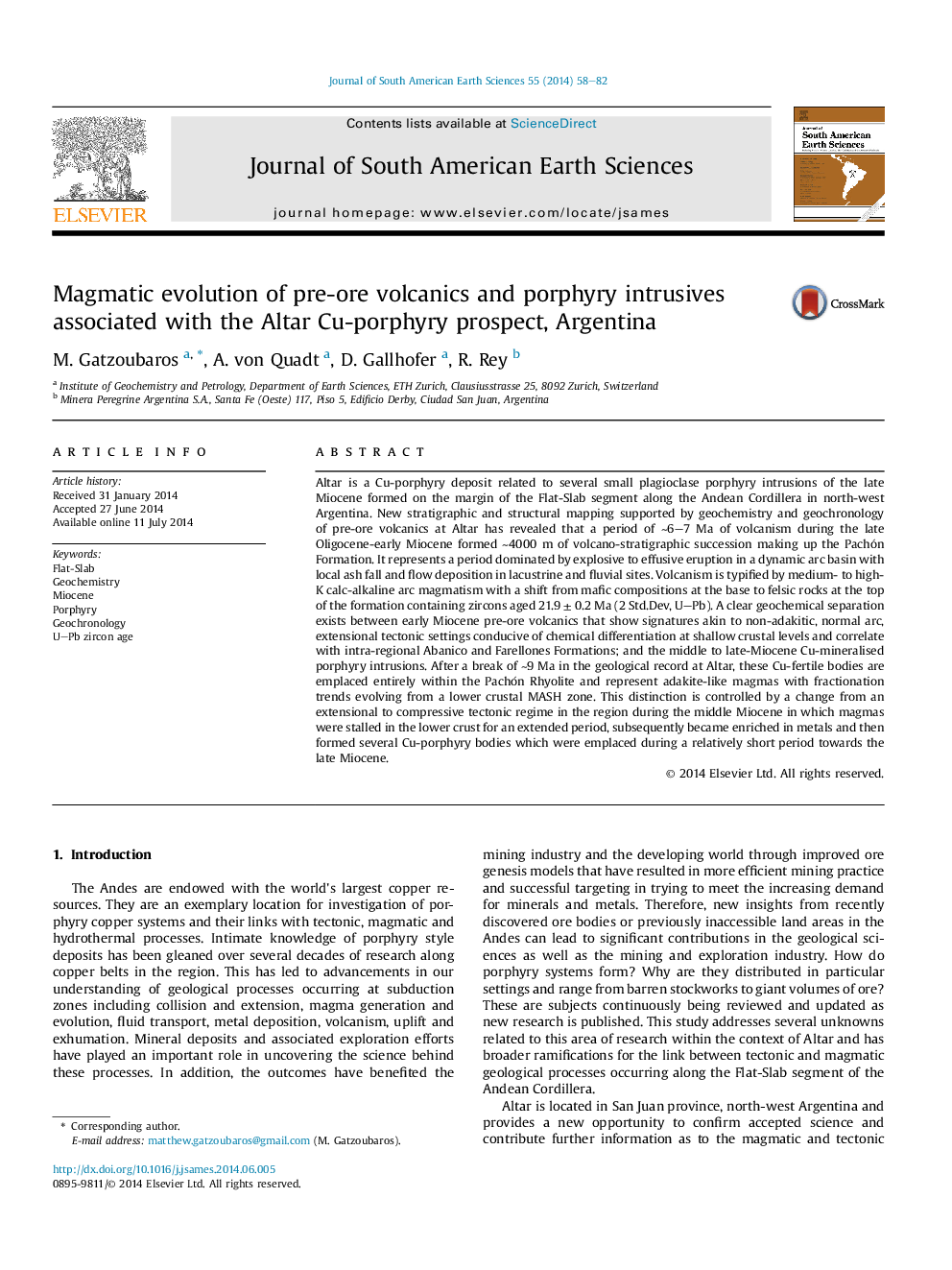| کد مقاله | کد نشریه | سال انتشار | مقاله انگلیسی | نسخه تمام متن |
|---|---|---|---|---|
| 4682300 | 1635154 | 2014 | 25 صفحه PDF | دانلود رایگان |
• New stratigraphic and structural mapping of Altar Cu-porphyry, Argentina.
• Constructs deposit-scale stratigraphic column with reference to regional geology.
• Presents geochemistry and geochronology of pre-ore volcanics at Altar.
• Compares geochemical signature of early Miocene volcanics and late Miocene porphyry.
• Top of the Pachón Formation (equivalent Abanico) is dated at 21.9 ± 0.2 Ma (U–Pb).
Altar is a Cu-porphyry deposit related to several small plagioclase porphyry intrusions of the late Miocene formed on the margin of the Flat-Slab segment along the Andean Cordillera in north-west Argentina. New stratigraphic and structural mapping supported by geochemistry and geochronology of pre-ore volcanics at Altar has revealed that a period of ∼6–7 Ma of volcanism during the late Oligocene-early Miocene formed ∼4000 m of volcano-stratigraphic succession making up the Pachón Formation. It represents a period dominated by explosive to effusive eruption in a dynamic arc basin with local ash fall and flow deposition in lacustrine and fluvial sites. Volcanism is typified by medium- to high-K calc-alkaline arc magmatism with a shift from mafic compositions at the base to felsic rocks at the top of the formation containing zircons aged 21.9 ± 0.2 Ma (2 Std.Dev, U–Pb). A clear geochemical separation exists between early Miocene pre-ore volcanics that show signatures akin to non-adakitic, normal arc, extensional tectonic settings conducive of chemical differentiation at shallow crustal levels and correlate with intra-regional Abanico and Farellones Formations; and the middle to late-Miocene Cu-mineralised porphyry intrusions. After a break of ∼9 Ma in the geological record at Altar, these Cu-fertile bodies are emplaced entirely within the Pachón Rhyolite and represent adakite-like magmas with fractionation trends evolving from a lower crustal MASH zone. This distinction is controlled by a change from an extensional to compressive tectonic regime in the region during the middle Miocene in which magmas were stalled in the lower crust for an extended period, subsequently became enriched in metals and then formed several Cu-porphyry bodies which were emplaced during a relatively short period towards the late Miocene.
Journal: Journal of South American Earth Sciences - Volume 55, November 2014, Pages 58–82
